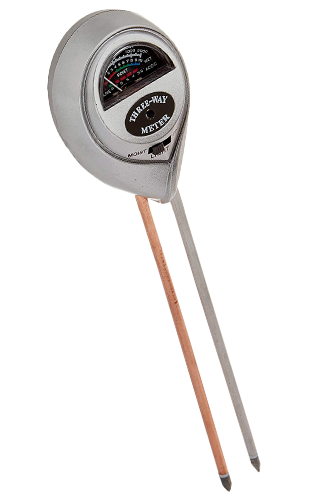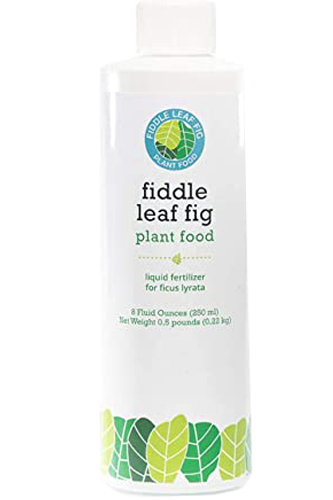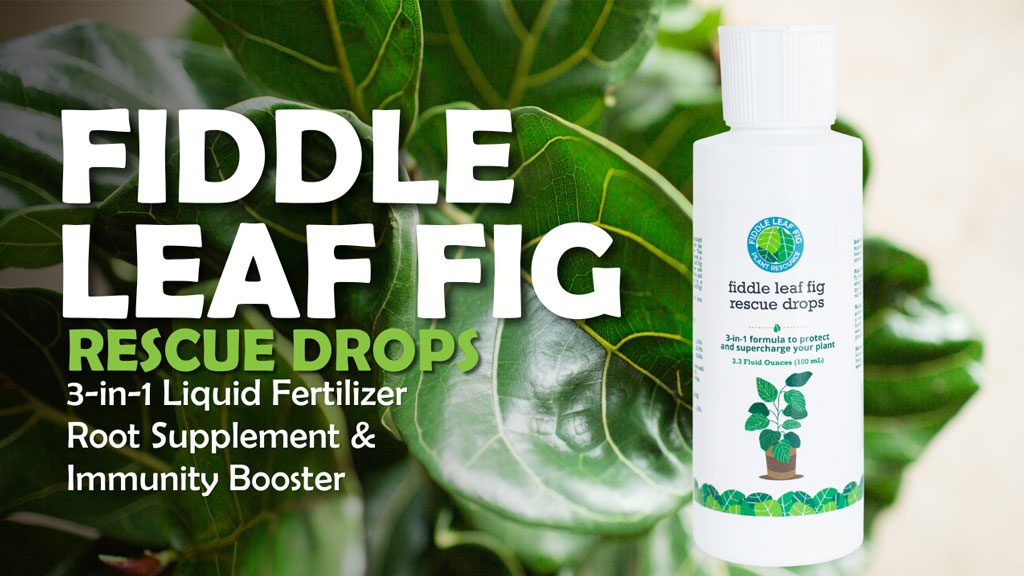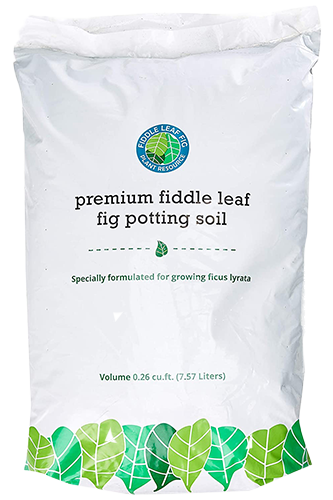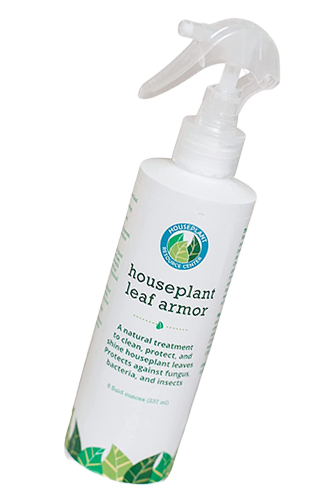If you’re in love with ficus trees and are looking for a fun new variety to add to your collection, try Ficus altissima! This gorgeous tree will be the perfect addition to your home and brighten up your space with its gorgeous leaves.
Also called the council tree or lofty fig, Ficus altissima is native to the tropics of Southeastern Asia and can reach up to 100 feet tall outdoors. (Don’t worry, it will only reach about 6 feet indoors so it won’t burst through your roof.) This epiphytic plant typically grows on other trees and puts down aerial roots to reach the ground and eventually support itself, much like the Indian Banyan tree. Also like the famed Banyan tree, Ficus altissima can grow very wide in its native habitat.
The oblong, slightly pointed leaves of Ficus altissima look similar to those of a rubber tree, but not quite as rounded, and typically with more prominent veins. The leaves also look similar to those of Ficus Audrey, especially when it’s young, but the leaves are longer and a little more pointed than the rounded leaves of Ficus Audrey. They also lack Audrey’s characteristic fuzzy texture and instead are much smoother and shinier!
Most Ficus altissima plants you’ll find online and in stores (when you can find them in stores) will be the yellow gem cultivar, which sports variegated leaves in beautiful shades of emerald and lime green.
If you’ve had experience caring for other ficus plants like Ficus lyrata, Ficus elastica, or a fig tree, you’ll have no problem caring for Ficus altissima. But if this is your first ficus, don’t worry, Ficus altissima care isn’t hard. We have some excellent care tips for your new plant.
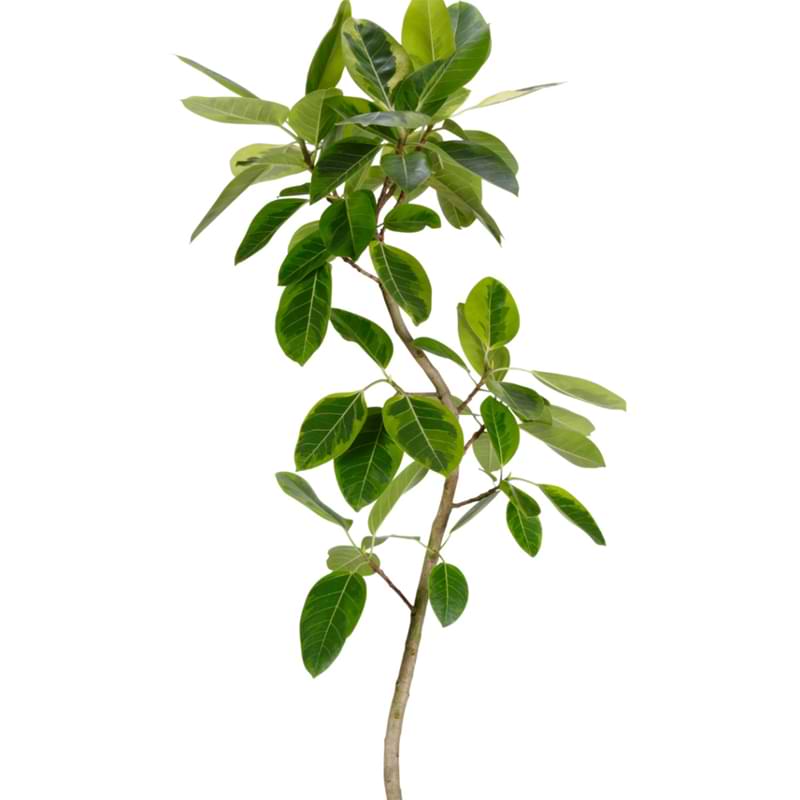
Ficus Altissima Care
Soil and Potting
Ficus altissima doesn’t like to sit in soggy soil, so make sure to choose a fast-draining variety, preferably with a neutral pH level of 6.5-7.
Cactus soil or indoor potting mix with a little peat moss and extra perlite thrown in can work in a pinch, but we recommend something with a little more nutrition. We created Fiddle Leaf Fig Soil specifically for fiddles and other species of ficus, and it’s a great choice for your Ficus altissima!
We also recommend that you use a pot with drainage holes, and that’s about 2-3 wider than the diameter of your plant’s root ball. This will help prevent overwatering and possibly root rot.
Watering
Ficus altissima tends to like a little less water than some other varieties of ficus. Water when the top 4 inches of soil feel dry to the touch, or when a moisture meter reads about 3.
We highly recommend using a moisture meter because this is a much better indication of what’s going on deeper in the pot and inside the root ball than the finger test or even using a wooden stick to test the moisture level of the soil.
Here’s the one we like best! (As an added bonus, it also measures light and soil pH!)
When it’s time to water, add water to the top of the soil until it starts to run out the bottom of the pot. Empty the drainage tray right away or put the pot in the sink or bathtub to drain completely to prevent excess water from causing root rot.
Light Requirements
Like most tropical houseplants and almost all varieties of ficus, Ficus altissima prefers bright, indirect light. This is especially important for preserving the variegation. If your indoor lighting conditions aren’t right, your plant will need to produce more chlorophyll (aka dark-green coloring) to make energy from less available sunlight, and the variegation will fade.
The best place for a Ficus altissima is in an east-facing window where it will get some morning light and bright light throughout the day, but little to no direct sunlight after 10:00 a.m. or so. You could also put your plant near a south- or west-facing window, but make sure the direct afternoon or midday sun doesn’t fall right on the leaves; they might scorch and leave ugly brown spots that won’t fade!
A north-facing window probably won’t provide enough direct light for your Ficus altissima to grow optimally or maintain its beautiful variegation. If you can’t provide enough bright indirect light, no problem! You can supplement with full-spectrum grow lights. We love these bulbs that you can fit into your regular light fixtures for the perfect blend of light and style.
Temperature & Humidity
Like all ficuses, Ficus altissima is a tropical plant and therefore appreciates warmer temperatures and a decent amount of humidity.
Keep temperatures between 68 and 85 degrees Fahrenheit, and never let them fall below 60 degrees. It’s also a good idea to keep your plant away from drafts, air conditioners, heaters, fireplaces, etc. Not only can these freeze or scorch your leaves, they can also dry them out!
To keep your plant’s leaves supple, make sure to keep humidity levels around 40% or higher. If you live in a very dry area, you might want to set up a humidifier near your plant, or if your Ficus altissima is on the small side, you can set it on a pebble tray. You can buy these at garden centers or make your own DIY version by filling a shallow tray with water and pebbles and sitting your plant’s pot on top, making sure the roots never touch the water. Your potted plant will enjoy a little extra humidity as the water evaporates!
Fertilizer
It takes a lot of minerals to grow those large, variegated leaves, and generally carry out photosynthesis, water uptake, and metabolism, so you’ll want to fertilize your Ficus altissima regularly with a balanced liquid fertilizer.
We recommend Fiddle Leaf Fig Food because it’s perfect for ficus trees, not just fiddles! It’s also gentle enough to use with each watering, so you won’t have to remember a fertilization schedule.
Get Fiddle Leaf Fig Food here!
Repotting
Plan on repotting your Ficus altissima every year so it doesn’t get root-bound.
To do this, tip the plant on its side and gently run a trowel or knife around the inside of the pot to dislodge the soil from the edge of the pot if necessary. Then gently coax the plant out, but don’t yank it. Remove as much of the old soil as possible.
Then add a few inches of soil to the bottom of a new, clean pot and place your plant upright in the new pot and fill in the sides with fresh soil. Water thoroughly and add a little soil to the top as needed to compensate for settling.
Pruning Ficus Altissima
Pruning your ficus can help keep it healthy and manage its size so it doesn’t take over your space.
If you notice any dried-out or dying leaves, go ahead and remove those. (And, of course, if those leaves are damaged as a result of a health problem, address the root cause!)
If your plant’s branches are getting crowded and blocking airflow between the leaves, you can also prune a little to open things up and prevent conditions like powdery mildew.
And if your tree is getting too big and needs a trim, you can remove some leaves and branches to keep things to a more manageable size.
When you prune, make sure to use sharp, sterilized shears to prevent spreading infection, and wear gloves to protect your hands from your ficus’s irritating white sap.
It’s also a good idea to mark the areas where you plan to make your cuts with colored string or twist ties so you don’t accidentally cut more than you intended!
Finally, try not to remove more than 10% of the leaves in one session to prevent sending your plant into shock. If you need to cut more than that, take a few leaves or branches and wait a week or two before cutting any more.
Ficus Altissima Propagating
If you’ve pruned healthy new growth off your Ficus altissima to control its size, don’t throw those cuttings away! You can propagate them to make new baby plants to give away as gifts (or, you know, to keep!).
To propagate your plant, place these cuttings upright in a sterilized glass container of clean water and a little Propagation Promoter and put it in a bright place. Keep the water topped off and change it out once per week. In a month or two, you should see little baby roots beginning to form!
If you have trouble keeping your cuttings upright in their container or medium, you should try these easy-to-use node holders! This handy propagation tool is a simple way to keep root cuttings healthy and in place while they take root, which gives those roots more room to grow without the added pressure of supporting the plant’s weight. This plant node support also helps your cuttings root faster!
Once those roots are at least an inch long, you can plant your cutting into some Fiddle Leaf Fig Potting Soil and care for it like a mature plant.
Common Problems With Ficus Altissima
While Ficus altissima is fairly hardy, you might run into some problems. Here are some signs to watch for and what to do about them so you can fix the issue before it’s too late!

Ficus Altissima Dropping Leaves
If your tree is dropping leaves, there could be several causes. The process of elimination can come in handy here.
First, have you moved or repotted your plant recently? If so, your plant might just be in shock. It’s normal for a Ficus altissima to droop or even drop a few leaves after a major environmental change. If you think this is the cause of your dropped leaves, just let your plant be so it can adjust to its new conditions. It will recover and perk back up.
Watering issues are also a common cause of leaf drop.
If you haven’t watered for a while, your soil is bone-dry, and the fallen leaves are dried out and crispy, your tree is probably in desperate need of a drink! Prune off any dried-out leaves and give your tree a good, thorough watering. Soak the soil and let it drain out the bottom.Overwatering can also cause leaf drop. If the fallen leaves have yellowing and dark-brown spots, this might be the issue. Check the soil (preferably with a moisture meter) to see if it’s overly wet. If it is, you might be able to get away with putting the plant in a bright place and giving the soil a chance to dry out, but if your plant is severely overwatered and root rot has started to set in, you might need to repot the plant into fresh, dry soil.
If you have to repot, make sure to get as much of the old, soaked soil out of the root ball as possible and trim away any rotten roots. (You’ll know which ones are rotten—they’ll be dark, mushy, and smell horrible!) Once you’ve repotted, give your plant plenty of light to help it recover. It’s also a good idea to go lighter on the watering for a while, and using our Root Supplement when you do water can prevent further infection and help your plant’s roots heal.
If watering and shock don’t seem to be a problem, make sure your tree is getting enough light and that it’s not infested with insects!
Ficus Altissima Yellow Leaves
Yellow leaves are usually caused by overwatering, insufficient light, or nutrient deficiency.
Again, the process of elimination will serve you well here.
First, check the soil. Is it overly wet? Use your moisture meter to see what’s going on in the root ball, because it’s possible for the top few inches to feel dry to the touch even when the root ball is soaked.
If your tree is overwatered, make sure the pot and soil are draining correctly, ensure that your tree is getting enough light, and scale back on the watering for a while. The yellow leaves won’t recover, so go ahead and prune those off.
If overwatering isn’t the problem, check out your plant’s light conditions. Does it get lots of bright, indirect sunlight for most of the day? Is the variegation still prominent or are your leaves mostly dark green? (This is a surefire sign that your plant’s not getting enough light!) Is your tree in a window that faces east or near a west- or south-facing window?
If not, you might need to provide more light by moving your tree or setting up a grow light.
Watering and light seem to be okay? Nutrient deficiency could be to blame, especially if you haven’t fertilized or repotted your plant in a long time.
If your plant’s soil is compacted and your ficus is a bit root-wrapped, it might just be time to repot. Otherwise, it’s time to start fertilizing your ficus! Use a balanced liquid fertilizer when you water to provide your plant with phosphorus, potassium, nitrogen, and other micronutrients it needs to grow those gorgeous leaves, strong stems, and healthy roots.
We recommend using Fiddle Leaf Fig Food with each watering during the spring and summer when your ficus is actively growing, and about half that much during the fall and winter when your tree is likely to be dormant.
Ficus Altissima Leaves Curling
If your plant’s leaves are curling, chances are that your plant needs more humidity! Set up a humidifier nearby or put your plant on a pebble tray. You can also mist your plant regularly, but this does come with some risks.
And, of course, make sure to watch out for nearby vents and heaters that could be emitting dry air and harming your plant’s leaves, especially when the seasons are changing and you’re turning on indoor climate control. Your plant might be fine in its spot for most of the year but then suddenly dry out once you turn on the heat for the winter!
Overwatering Ficus Altissima
Many Ficus altissima health problems are caused by overwatering, but this issue isn’t as simple as simply giving your plant too much water.
Often, overwatering is caused by light and drainage issues.
If you notice signs of overwatering like yellowing leaves, soft stems, or dark-brown spots, make sure your plant is getting enough light, because insufficient light can cause your plant to use water less efficiently.
Then make sure your pot and soil are draining well.
Of course, your pot should have drainage holes. If not, repot into a container that does! Your soil should be light and aerated to let water drain right through. If the soil is dense, hardened, and compacted, or if it tends to overflow before draining out the bottom when you water, it might be time to repot into fresh, fast-draining soil like our Premium Fiddle Leaf Fig Potting Soil.
Take care of these issues before simply watering your plant less.
Ficus Altissima FAQs
FAQ Is Ficus altissima the same as a fiddle leaf fig?
Nope! Ficus altissima and Ficus lyrata are two different ficus varieties, but their care is very similar. If you can care for one, you should have no trouble caring for the other!
FAQ Is Ficus altissima a tree?
Sure is! You can buy a small Ficus altissima, but with the proper care and time, your plant will grow into a tree that can easily reach 6 feet indoors!
Ficus altissima is a newcomer on the ficus scene, but it’s the perfect addition to your indoor tree collection, especially if you have the hang of caring for another ficus and want to add some variety and a pop of lime-green color to your indoor space.
As far as trees go, this variety is quite easy to care for and will reward you with lots of beautiful, variegated leaves. Give it a try!
Grab the Essentials for Your Fiddle Leaf Fig:
- Premium Fiddle Leaf Fig Potting Soil
- Fiddle Leaf Fig Plant Food
- Root Rot Treatment
- Houseplant Leaf Armor to protect against insects, bacteria, and fungus (As an added bonus, it also cleans and adds shine to your plant’s leaves!)
- Moisture meter to always know when your plant is thirsty.
To learn more:
- Sign up for our free Fiddle Leaf Fig Care 101 Webinar for advanced fiddle leaf fig care.
- Make sure you’re subscribed to our newsletter.
- Read The Fiddle Leaf Fig Expert, your complete guide to growing healthy fiddle leaf fig plants. The book is available in full-color paperback or Kindle edition on Amazon now!
- Click to join our community on Facebook: Fiddle Leaf Fig Plant Resource Group.


